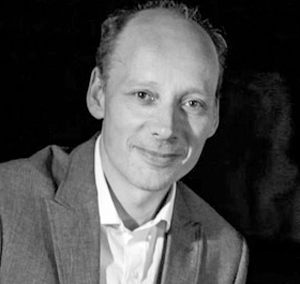by Daniel Hathaway

Daniel Hathaway: When we last talked, you were heading off at the end of the Tokyo Quartet’s last season to teach at the Colburn School in Los Angeles. How is everything going for you these days?
Clive Greensmith: Two years on, everything is going wonderfully well. I was very happy with the way we ended as a quartet — we went out on a high. And I’ve just finished two wonderful years at the school now.
DH: This is your first appearance at ChamberFest Cleveland. How did that come about?
CG: Frank Cohen and I have played together a few times. He played with the Tokyo Quartet back in Santa Fe about a decade ago. And then we often would encounter each other at the Sarasota Music Festival. I heard him play several times magnificently well there, and we would get together and socialize. Then I met Diana Cohen up in Calgary when the quartet was playing there during its last season with Jon Kimura Parker — with whom Martin Beaver and I now have a trio. We were having dinner, and she asked me if I would be interested in coming to Cleveland that summer. I wasn’t able to make it last year, so she invited me for this year. I’m very happy that the dates worked out this time.
DH: Frank and Diana have set a big task for themselves in planning this festival.
CF: It’s a difficult puzzle to put together — with lots of different winds and strings and the thematic programming. I’m happy to leave that to someone else to figure out.
DH: What works will you be playing?
CG: The big pieces are the Ensecu Octet, Beethoven’s Op. 59/1 quartet, Schnittke’s third quartet, and the Beethoven Septet. Those are the ones where the red flags are going up saying “practice!”
DH: How has your life changed since the denouement of the Tokyo Quartet?
CG: The most obvious change was moving away from a life of constant touring. In our last season we played about 120 different dates — plus recording and teaching at Yale. Now I’m not traveling as much but playing quite a bit. Most of what I do now is focused on teaching and organizing the Colburn School chamber music program with my colleague Martin Beaver — we’re co-directing the program.
Then I also have my own studio, which is wonderful, and I’m enjoying that just as much as everything else. I teach five graduate students and also some younger ones at the so-called Academy, which is Colburn’s prep school. Altogether, I have a full studio of about ten. In between heavy weeks of teaching, I flit out for concerts. I felt it was very important after the quartet finished to have a serious endeavor, a regular group. Fortunately, I’ve been able to form a wonderful piano trio. We call ourselves the Montrose Trio. We’re looking forward to our first real season of touring in 2015-2016. We’ve already played three or four times together. It’s gone well, and we’re now gainfully employed. We have quite a nice season to look forward to.
And then I have things like ChamberFest Cleveland. I’m very happy to play as a freelancer at different sorts of festivals — Chamber Music Northwest, Santa Fe, Bridgehampton — and I’ll be at Music@Menlo with David Finckel and Wu Han later this summer. I love having the chance to play with a variety of different people. It’s a big change, but a welcome one. It’s nice to mix things up and play different kinds of repertoire.
DH: I read an interview where you said you were looking forward to taking on some projects you’d never had time for. Have you ticked some of those items off your bucket list?
CG: I’ve been very fortunate. I managed to record a piece that I’d always played a lot and never had the opportunity to record: the magnificent Brahms Clarinet Trio, which is really one of my desert island discs. I was lucky to be able to record that with clarinetist Jon Menasse and pianist Jon Nakamatsu on Harmonia Mundi, the same record label we recorded for with the Tokyo Quartet. The other piece on the album, which came out in October, 2014, is the Beethoven Op. 11 Trio.
I’ve done some recital work, too. I played a concert in Taipei, and now I’m playing more of the sonata repertoire again. Occasionally, I’ll play a concerto. Those are all things that are very welcome, and it’s nice to get back to really focusing on the cello solo repertoire, whether playing it or teaching it.
I did teach at the Manhattan School for four or five years before, but of course it was by necessity the kind of teaching position where I would dart in and out between concerts and tours. Now, I can give attention to my students in a way that I couldn’t before. That’s very gratifying, because I feel that I’m helping to build other people’s lives.
DH: And how do you enjoy living in Los Angeles?
CG: Having been brought up in England and gone to school in northwest Germany — where the sun rarely appears — Southern California is a welcome change of pace. I love living there. I seem to have arrived just at the moment when the downtown area, where the Colburn School is situated, seems to be going through a renewal. You have Disney Hall, the new contemporary art museum, and everything along South Grand Avenue. And I’m able to walk to work, something I wanted to do after all the traveling. It’s nice not to have to take a plane or a bus or a train. I’ve managed to succeed in that, so I’m very happy.
Published on ClevelandClassical.com June 18, 2015.
Click here for a printable copy of this article



